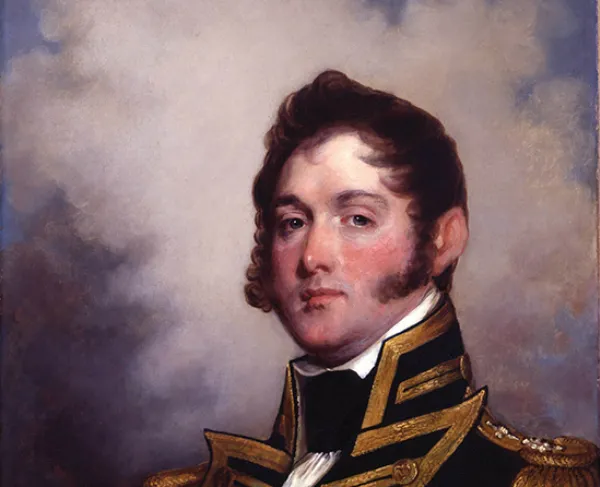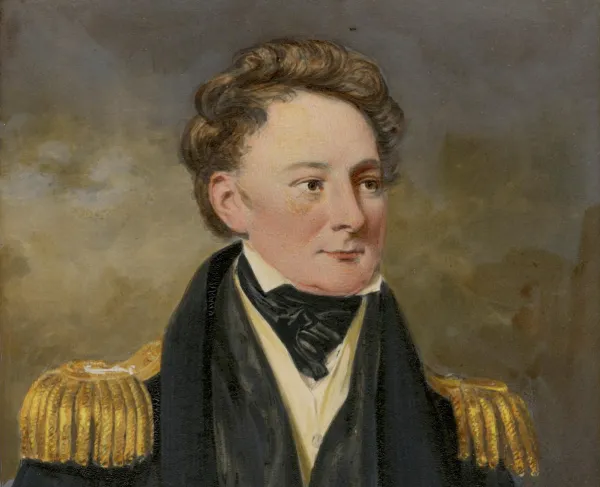
Lake Erie
Put-In-Bay
Ohio | Sep 10, 1813
On September 10, 1813, American Naval forces under the command of Oliver H. Perry attacked Robert H. Barclay’s British fleet in Lake Erie. In the resulting action, Perry’s forces gained a victory and claimed supremacy over the lake, causing the British to evacuate Fort Detroit.
How It Ended
American Victory. After breaching the British lines with his flagship, the USS Niagara, Perry’s force managed to break the will of the British navy and ultimately forced a wounded Robert H. Barclay to surrender. After the victory, the American navy along Lake Erie maintained control over the region for the rest of the war and forced British forces in Upper Canada to consolidate their forces.
In Context
At the start of the War of 1812, the British army and navy took control over Lake Erie and went unchallenged until the early fall of 1813. During this time, American Admiral Oliver H. Perry was tasked with organizing and creating an American fleet to challenge the British presence and reclaim the lake and possibly the Detroit frontier. Perry prepared to launch his attack on British Admiral Robert H. Barclay’s fleet with nine ships in early September.
In March of 1813, Admiral Oliver H. Perry was placed in command of the Lake Erie area. He was tasked with creating and establishing a fleet that would challenge British control. To stop this fleet from growing, British Admiral Robert H. Barclay tried to besiege Perry’s base of operation on Presque Isle. Perry's only mountable defense to protect his growing fleet was a sandbar defended by American cannons that prevented the British ships from destroying the new American squadron. The British, however, abandoned their blockade in July 1813 due to the poor weather and looming shortage of supplies. As the British Royal Navy withdrew, the newly constructed American squadron slowly traversed the sandbar and moved toward Put-In-Bay for the upcoming battle.
540
450
On September 10, 1813, the American squadron spotted the British vessels, hoisted their anchors, and departed Put-In-Bay to meet their British foe. While the British ships were equipped with longer-range cannons, they lacked the firepower of the American vessels. Accordingly, Perry ordered his two largest ships, the USS Niagara and the Lawrence, to set full sail and proceed directly towards the British line to compensate for the lack of range. To rally his men, Perry flew a flag with the phrase, “Don’t Give Up the Ship,” which was stated by his friend James Lawrence while defending the USS Chesapeake.
Perry’s flagship was the Lawrence, which was conspicuous as it sailed to close the distance between the British ships and the ship’s cannons. However, the captain of the Niagara was less keen on charging into the British ships under a maelstrom of cannon fire and therefore froze and left Perry to charge into the British line alone. However, with the aid of the smaller American gunboats, Perry was able to close the gap between his vessel and the already-engaged British. Unfortunately, despite Perry’s maneuver, the cannons aboard the Lawrence did not have the destructive effect Perry had planned. As a result, the Lawrence came under direct fire from two British vessels who made quick work of Perry’s ship. It was only after the last cannon was rendered unusable that Perry departed the destroyed Lawrence on a small rowboat and transferred his flag onto the Niagara.
Perry miraculously escaped the wreck of the Lawrence unscathed with the help of his assistant Cyrus Tiffany, a free African American who physically shielded Perry from debris and gunfire during their escape to the Niagara. Perry, now in command of the Niagara, intended to continue the fight. However, the British vessels believed Perry fled to the Niagara to lead the American squadron in retreat. Instead, with a favorable wind, the Americans sailed the Niagara and the smaller gunboats and schooners toward the British line and opened fire to significant effect. Two British vessels previously entangled in their rigging during the engagement with the Lawrence only managed to break free after the American squadron utterly decimated the British flotilla.
123
440
Once Perry punched through his lines and British morale broke, a wounded Barclay decided to surrender his two largest ships, the HMS Detriot and HMS Queen Charlotte. Lake Erie was now under American control. Facing American naval supremacy, the British forces withdrew from Fort Detroit. The lake remained in American hands for the remainder of the war, which prevented any possible British invasion of Ohio or Pennsylvania from Canada.
In the spring and summer of 1813, American forces went on the war’s western front offensive. First, American forces under Zebulon Pike attacked York, Canada, taking it and burning the town and military supplies there. With the town's capture, British forces in the area were forced to reroute their supply lines to a much longer route. This huge loss and change in supply greatly affected Barclay’s fleet. He lifted the siege with limited supplies and munitions to secure his supply lines and consolidate his forces.
In the days before the Battle of Lake Erie, Perry wanted to have a flag to signal to his fleet to attack the British fleet and bolster his men’s spirits. Samuel Hamberton suggested he sew the famous last words of naval commander James Lawrence, “ Don’t Give Up the Ship,” who died in June 1813 while defending the USS Chesapeake. Liking this idea, Perry decided to adopt it. Once completed, the flag was given to the USS Niagara and flown during the battle, emboldening many sailors and helping in the American victory.
Lake Erie: Featured Resources
Related Battles
540
450
123
440












